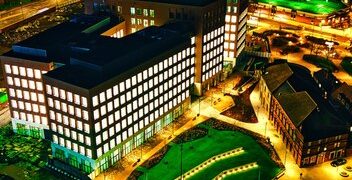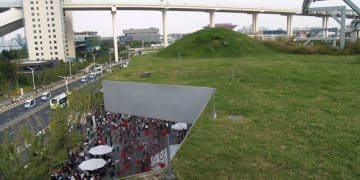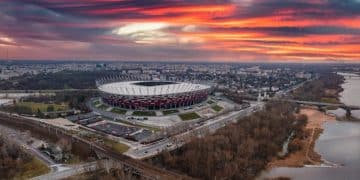World Cup 2026: Economic Impact on US Host Cities
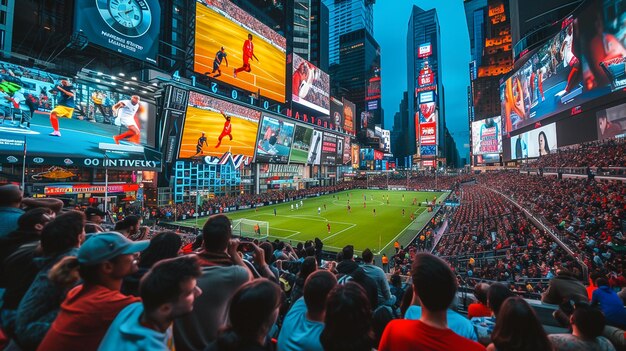
World Cup 2026: Analyzing the Economic Impact on Host Cities Across the US reveals potential boosts in tourism, job creation, and infrastructure development, but also highlights challenges like increased costs and logistical complexities for the selected cities.
The World Cup 2026: Analyzing the Economic Impact on Host Cities Across the US is poised to be a monumental event, not just for soccer fans, but also for the economies of the cities chosen to host the matches. With millions of fans expected to descend upon these locations, understanding the potential economic benefits and challenges is crucial.
What exactly can these cities expect, and are they truly ready for the global stage? Let’s delve into the specifics of the expected economic changes in the United States.
World Cup 2026: An Overview of Host Cities in the US
The selection of host cities for the World Cup 2026 generated immense excitement and anticipation across the United States. Eleven cities in the US were selected to host matches during the tournament. Each city is expected to offer unique experiences to visiting fans.
Key Host Cities and Their Preparations
Each of these cities is now working to upgrade stadiums, improve infrastructure, and enhance hospitality services to ensure a successful and memorable tournament.
- Atlanta: Known for its vibrant sports culture and world-class facilities.
- Boston: With its historic charm and passionate soccer fan base.
- Dallas: Boasting state-of-the-art stadiums and a large, diverse population.
- Houston: Offering a mix of Southern hospitality and international flair.
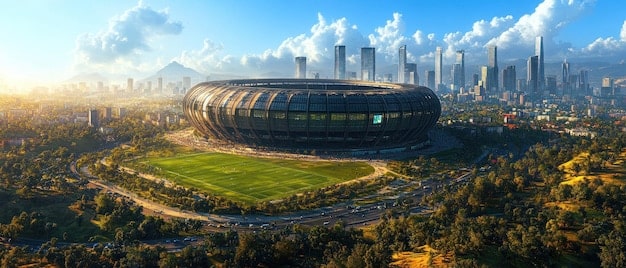
These preparations are aimed at creating a seamless experience for fans and maximizing the economic benefits that the tournament can bring.
Economic Impacts: The Positive Side of Hosting
Hosting the World Cup 2026 can generate substantial economic benefits for host cities. These advantages include increased tourism revenue, job creation, and infrastructure improvements. Understanding these potential gains is essential for cities to maximize their advantages.
Tourism Boom and Revenue Generation
The influx of international and domestic tourists during the World Cup can lead to a significant increase in hotel occupancy rates, restaurant sales, and spending on local attractions.
- Increased Hotel Occupancy: Hotels can expect to see occupancy rates soar during the tournament, leading to substantial revenue gains.
- Restaurant and Retail Sales: Local restaurants and retail stores can benefit from increased foot traffic and spending.
- Local Attractions: Tourist attractions, museums, and entertainment venues can also experience higher visitation rates.
Job Creation and Employment Opportunities
The World Cup can create temporary and permanent job opportunities in various sectors, including hospitality, transportation, and security.
- Construction Jobs: Stadium upgrades and infrastructure projects can generate numerous construction jobs.
- Hospitality Jobs: Hotels, restaurants, and tourism-related businesses will need to hire additional staff to accommodate the influx of visitors.
- Security and Transportation: Security personnel and transportation workers will be in high demand to ensure the safety and smooth operation of the event.
These job opportunities can provide a boost to local economies and improve employment rates.
Potential Drawbacks and Economic Challenges
Despite the potential economic benefits, hosting the World Cup 2026 also presents significant challenges. These include high costs, increased logistical complexity, and the risk of overspending on infrastructure projects.
High Costs and Financial Burdens
Hosting the World Cup requires significant investment in infrastructure, security, and operational expenses. These costs can place a strain on city budgets and resources.
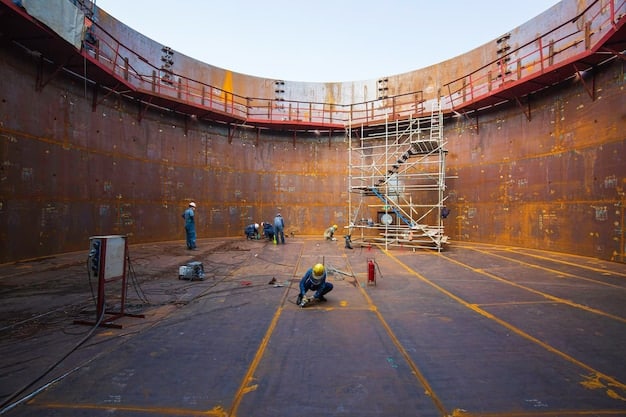
- Infrastructure Costs: Stadium upgrades, transportation improvements, and other infrastructure projects can be very expensive.
- Security Expenses: Ensuring the safety and security of the event requires a significant investment in security personnel and equipment.
- Operational Costs: Day-to-day operations, including transportation, logistics, and event management, can also add to the overall cost.
Logistical Complexities and Resource Management
Managing the influx of visitors and ensuring the smooth operation of the tournament requires careful planning and coordination. Cities must address issues such as transportation, accommodation, and crowd control.
The costs associated with hosting the World Cup 2026 can be substantial, potentially impacting other essential services and investments in the host cities.
Long-Term Impacts: Beyond the Tournament
The World Cup 2026 can have lasting impacts on host cities, even after the tournament is over. These long-term effects can include improved infrastructure, increased tourism, and a boost to the city’s reputation.
Infrastructure Improvements and Urban Development
The infrastructure projects undertaken for the World Cup can benefit the city for years to come. Improved transportation systems, upgraded stadiums, and enhanced public spaces can enhance the quality of life for residents and attract future investment.
- Transportation Upgrades: Investments in public transportation systems can improve mobility and accessibility throughout the city.
- Stadium Legacy: Upgraded stadiums can continue to host sporting events, concerts, and other major events.
- Public Spaces: Enhanced public spaces, such as parks and plazas, can create vibrant gathering places for residents and visitors.
Boosting the City’s Reputation and Attracting Investment
Hosting the World Cup can enhance a city’s global profile and attract future investment. The exposure generated by the tournament can showcase the city’s attractions, infrastructure, and business opportunities.
Sustaining these long-term benefits requires strategic planning and investment in key sectors to maximize the opportunities created by the tournament.
Strategies for Host Cities to Maximize Economic Benefits
To fully capitalize on the economic opportunities presented by the World Cup 2026, host cities need to develop comprehensive strategies. These plans should focus on maximizing tourism revenue, managing costs effectively, and leveraging the event to attract long-term investment.
Developing Comprehensive Tourism Strategies
To maximize tourism revenue, cities must develop targeted marketing campaigns, offer attractive tourism packages, and enhance the visitor experience.
- Targeted Marketing: Tailor marketing campaigns to attract specific demographics and interests.
- Tourism Packages: Offer bundled packages that include accommodation, transportation, and event tickets.
- Visitor Experience: Enhance the visitor experience by providing excellent customer service, clear communication, and convenient facilities.
Effective Cost Management and Financial Planning
To manage costs effectively, cities must develop detailed budgets, prioritize essential projects, and explore alternative funding sources.Prudent financial planning is essential to prevent cost overruns and ensure that the benefits outweigh the costs.
Impact Analysis and Projections for the World Cup 2026
The projected economic impact of the World Cup 2026 on host cities is substantial. Reports indicate that the event could generate billions of dollars in economic activity, creating numerous jobs and boosting local economies.
“`html
| Key Point | Brief Description |
|---|---|
| ⚽ Tourism Boost | Increased visitors mean higher hotel and restaurant revenues. |
| 🛠️ Infrastructure | Upgrades in transportation and stadiums enhance city appeal. |
| 💼 Job Creation | Temporary and permanent jobs in hospitality and security emerge. |
| 💸 Financial Risks | High costs and potential overspending can burden city budgets. |
“`html
Frequently Asked Questions
The World Cup 2026: Analyzing the Economic Impact on Host Cities Across the US suggests a significant financial boost through tourism, job creation, and infrastructure development, though costs must be carefully managed.
Atlanta, Boston, Dallas, and Houston are among the eleven US cities that have been selected to host matches during the prestigious World Cup 2026 tournament.
The World Cup 2026 is expected to generate jobs in construction, hospitality, security, and transportation, providing both temporary and permanent employment opportunities.
Hosting the World Cup can lead to high costs, logistical challenges, and potential overspending on infrastructure, which can strain city budgets and resources.
Cities should develop comprehensive tourism strategies, implement effective cost management, and leverage the event to attract long-term investments to maximize the World Cup 2026: Analyzing the Economic Impact on Host Cities Across the US.
“`html
Conclusion
In conclusion, the World Cup 2026: Analyzing the Economic Impact on Host Cities Across the US reveals a landscape of opportunities and challenges. The potential for economic growth is substantial, but careful planning and financial management are crucial.
Ultimately, the success of the World Cup 2026 in host cities depends on their ability to embrace the opportunities while mitigating the risks, ensuring a lasting positive legacy for their communities.


